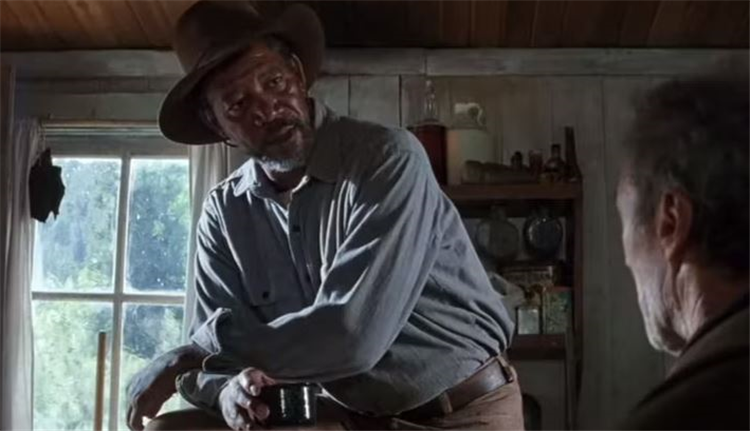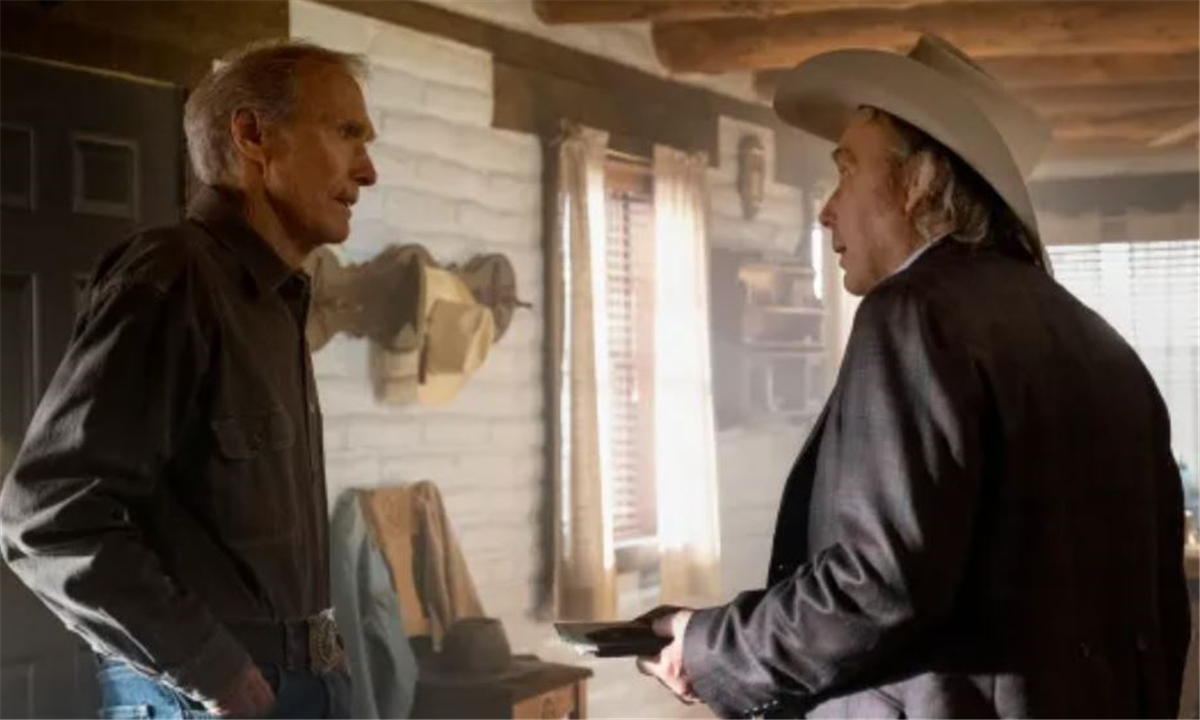Since making his debut as The Man With No Name in 1964’s A Fistful of Dollars, Clint Eastwood has been the face of the Western genre for generations. Dethroning John Wayne as America’s favorite gunfighter, the actor earned a reputation for his rugged, morally ambiguous protagonists, something that was relatively new for the genre. The Hollywood legend’s tenure as the leading man of the Old West came to an epic conclusion in an iconic 1992 movie — and it should have stayed that way.
In 1964, Clint Eastwood teamed up with Sergio Leone to make A Fistful of Dollars. Telling the story of a lone, mysterious gunfighter who finds himself the unlikely hero of a small town caught between two warring factions, the movie masterfully duplicated Akira Kurosawa’s Yojimbo. Moving on from homage, Leone and Eastwood returned with For A Few Dollars More (1965) and The Good, the Bad and the Ugly (1966), both of which were ringing success stories. While the actor had taken on a few minor roles before, Eastwood’s breakout performance was as the Man With No Name. From there, he starred in a long slew of Westerns, such as Pale Rider, The Outlaw Josey Wales, and High Plains Drifter.
1992’s Unforgiven Is Deconstruction Done Right
In 1992, Clint Eastwood starred in and directed Unforgiven, a revisionist Western set in Wyoming. The story begins in the town of Big Whiskey, when a cowboy brutally attacks a prostitute for mocking him, leaving her gravely injured and in need of care. After detaining the cowboy and his friend, the brothel owner seeks compensation, turning to Sheriff “Little” Bill Daggett. More concerned with maintaining peace and order than meting out justice, Bill’s punishment turns out to be a mere slap on the wrist, one that doesn’t address the severity of the violence — instead only compensating the owner. In response, the prostitutes collect enough money to place a bounty on the heads of the cowboys.

After the bounty is placed, audiences are introduced to William Munny, a retired gunfighter with a history of violence against men, women, and children alike. Now a widowed father trying to make ends meet and filled with regret for his past, Munny reluctantly agrees to join his old friend, Ned Logan, and young gunslinger Schofield Kid in claiming the reward. At the same time, the arrival of a bounty hunter, English Bob, in Big Whiskey incurs the wrath of Little Bill, who makes an example of Bob to ward off other would-be threats. As the story progresses, the film explores Bill’s own perspective, as a man who’s seen enough bloodshed for a lifetime and wants to keep his town clean and safe. The film makes it clear that, although Bill isn’t an evil man by nature, the reality of the West was often defined by a struggle between order, justice and violence.
After making their way to Big Whiskey, there’s a skirmish between Munny and his companions and those working for Little Bill. When this culminates in the murder of Ned Logan and the subsequent display of his body as a warning, Munny guns down every man in Bill’s posse — including the sheriff himself. After the lawman insists “I don’t deserve this,” Munny famously responds with “deserve’s got nothing to do with it” before finishing the kill. That line alone perfectly sums up what the film itself says about the West — it was a time and place of senseless violence, and few who suffered really deserved it. Where a man with a history of evil deeds like Munny can walk away, a sheriff looking out for his town becomes the villain, showing how “evil” can be a matter of perspective depending on circumstances.
Why Unforgiven Was the Perfect End To Eastwood’s Westerns
Throughout his career, Eastwood was best associated with revisionist Westerns, a sub-genre known for trying to bring a realistic, nuanced approach to the West. Where Hollywood had previously favored lawmen, soldiers, and hard-working pioneers as heroes, the 1950s saw a turning of the tide towards imperfect, complex protagonists. Rather than pretend that Western expansion had been a tale of honest men and women just trying to settle down, the industry explored every type of character in the region. These included corrupt law enforcement, shady entrepreneurs, brutal cavalrymen, amoral bounty hunters, and racist settlers. Suddenly, the West started to look closer to what historians claimed, and that’s only continued since. From The Outlaw Josey Wales to Hang ‘Em High, Eastwood was at the forefront of this push.
In Unforgiven, the concept of the revisionist Western reaches its peak and still hasn’t been topped despite three decades of fantastic films after it. The masterpiece serves as both a send-off to Eastwood’s signature ambiguous antiheroes and a stark anti-violence story, showing how injustice spreads like a disease, and violence claims the lives of the good and bad alike. In a land of ever-changing power, morality, and broken justice, a man haunted by an evil past steps into the role of protagonist, while a well-meaning lawman’s aversion to disorder shapes him into a villain. Although Munny is distinct from the previous Eastwood heroes, the film still resonates as a conclusion to the stories of the actor’s past characters and firmly closes the book on a legendary career.
In 2008, Eastwood explained his views on the ’92 film in an interview with Esquire, stating “The last one I did was in ’92. Unforgiven. That was a wonderful script. But it seemed like it was the end of the road for me with the genre because it sort of summarized everything I felt about the Western at that particular time.” Interestingly, his trajectory had actually mirrored that of John Wayne, whose final Western, The Shootist, had a similar theme of an aged gunfighter’s violent past catching up with him, albeit differently. After decades of taking on similar roles of flawed but ultimately heroic protagonists, the 1992 movie was a great moment of closure for Eastwood and his fans. The film cast him in the same role of a formidable gunfighter who’s the best shot in town but grounded him in a far more ambiguous setting, where nobody walks away a winner.
Eastwood’s Return to Westerns Muddied An Otherwise Flawless Career

Few actors have as impressive a track record in one genre as Eastwood in Westerns. After all, even John Wayne starred in enough forgettable Westerns to fill a career, with most modern viewers remembering him for a handful of roles. In 2021, the actor returned to the genre for the first time in three decades. Cry Macho follows the story of a retired rodeo star, Mike Milo, who is hired by his old boss to find and escort his son, Rafo, from Mexico City to Texas, so they can live together. When he finds the boy, Mike learns that the mother, Leta, is a crime boss, something that becomes a hindrance when she sends her goons after them. The film is essentially a more subdued version of 2017’s Logan, casting the acting legend as a reluctant caretaker charged with driving a child north to safety.
While Cry Macho is a decent watch, it needlessly muddied what had otherwise been a brilliant footprint in the Western genre for Eastwood. Where the film star could have left his tenure in the Western genre on a perfect note, he instead tried to capitalize on the growing success of neo-Westerns over the last fifteen years. The career choice made sense and could have been brilliant in the right hands with the right story, but it instead went down as an average indie neo-Western.
Unforgiven Will Always Be Important
For many modern Western fans, Unforgiven was the film that got them interested in the genre. While it is a story of gunfighters and a quest for justice, the film’s substance comes from its character deconstructions, whether that’s the cynical Little Bill or the regretful William Munny. Through the flawed sheriff, viewers are led down a journey of the reality of the West, with the man explaining how much of the mythology of gunfighters was fabricated for self-image. That only makes it all the more impressive when, in the film’s climax, Eastwood’s antihero lives up to the legend, and guns down every man in front of him.
After three decades of leading the Western genre with very little competition, the ’92 deconstruction piece was the best conclusion to Eastwood’s time in the genre. Having played just about every character he could, from outlaws and bounty hunters to soldiers and lawmen, Unforgiven said everything that needed to be said. In any other era, the lawman Little Bill would have been the hero, and a man with Munny’s past would have firmly been the villain. Here, Eastwood takes the concept of the antihero to its fullest potential, giving audiences a man driven back to violence by revenge and desperation, rather than a classic sense of justice.
